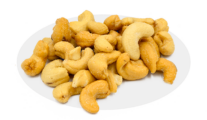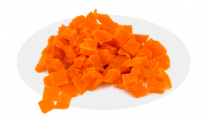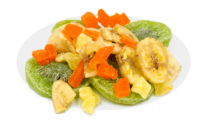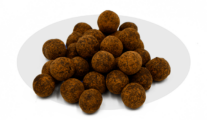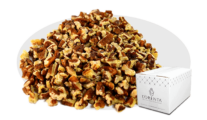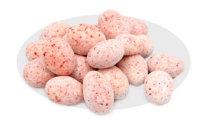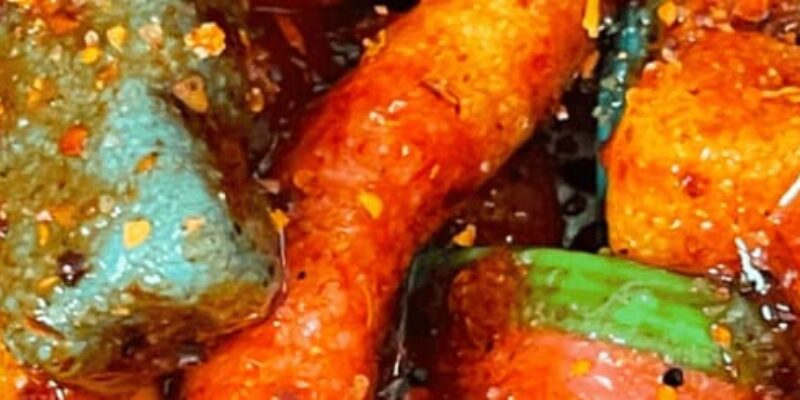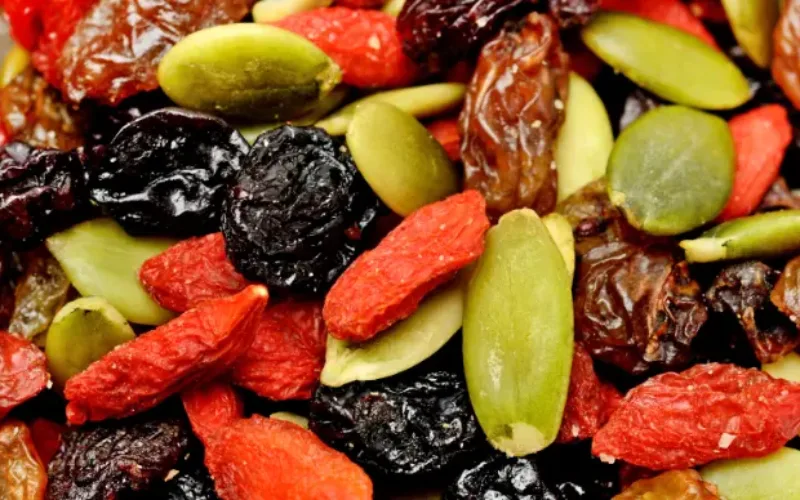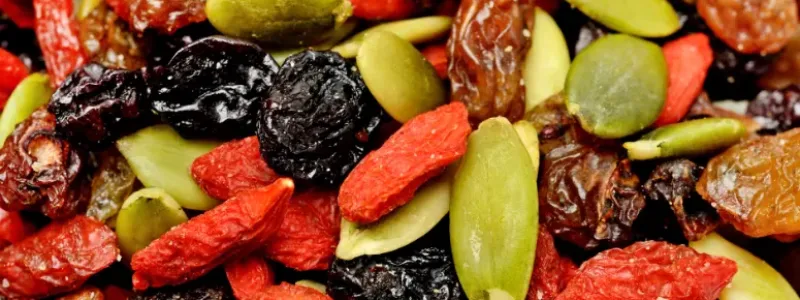Written By Sam Henselijn
What’s Chamoy Candy? If you haven’t had the opportunity to try one of Mexico’s favorite candy condiment, Chamoy, you are missing out on a bomb full of flavors that explodes the moment it touches your mouth with all kinds of contrasting flavors. Chamoy is a Mexican-originated sauce traditionally made by combining fruits and chili. It can be included in so many dishes that its flexibility is its most impressive attribute. Learn below what is Chamoy candy!
So, let’s take a look at what chamoy is, its history, and all details about this traditional salsa that you can find in street vendors all across Mexico and other countries.
Where does Chamoy come from?
The true story of the discovery of Chamoy is unknown. However, according to some food historians, the actual beginning of Chamoy’s origins was in China.
Some believe that it came from Asia via Filipino immigrants back in the XVI century. The term may have come from ‘Kiamoy’, sweets that are sold in the Philippines. Kiamoy has a similar preparation process as Chamoy. Although Kiamoy isn’t spicy and it has a different flavor profile, the resemblance could actually speak to the fact that it may somehow be Chamoy’s older relative.
Wherever it originated, it is now a traditional Mexican candy at the top of Mexican candy’s bestsellers. So, let’s see what it’s made of, how it tastes, and what to eat it with.
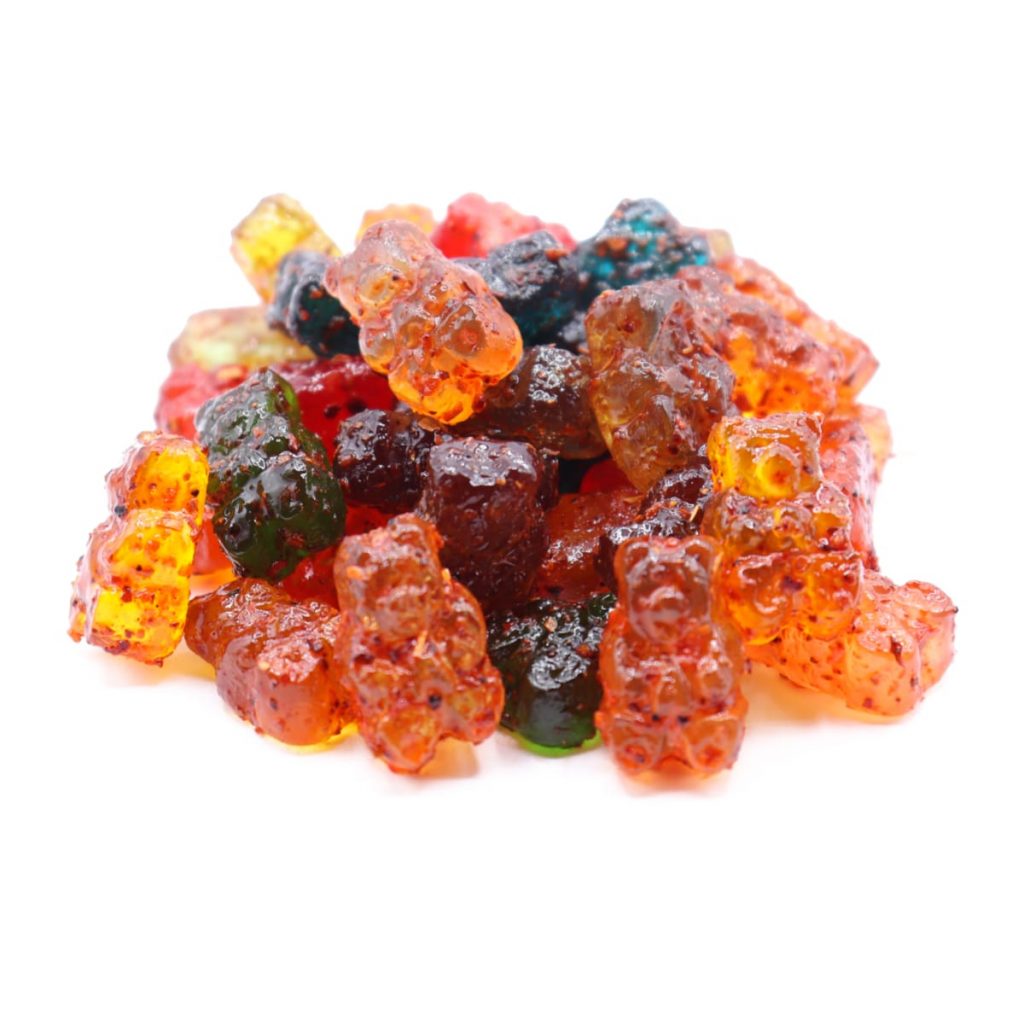
What are the ingredients in Chamoy?
The answer to this question varies, and it varies so much that there’s no right answer. This sauce gives versatility a completely new definition.
Dried apricots, pineapple, tamarind, mangos, apricots, plums, or a combination of these is what it is usually made out of. In addition, it contains hibiscus flowers, chilis, lime juice, sugar, and some other ingredients. You can find an immense amount of recipes that showcase Chamoy’s flexibility and variety.
What kind of texture does it have?
It is often a red liquid. Sometimes thicker than others. There are some variations that have a paste-like texture and there’s also a powder-like version that people often eat with fresh-cut fruit.
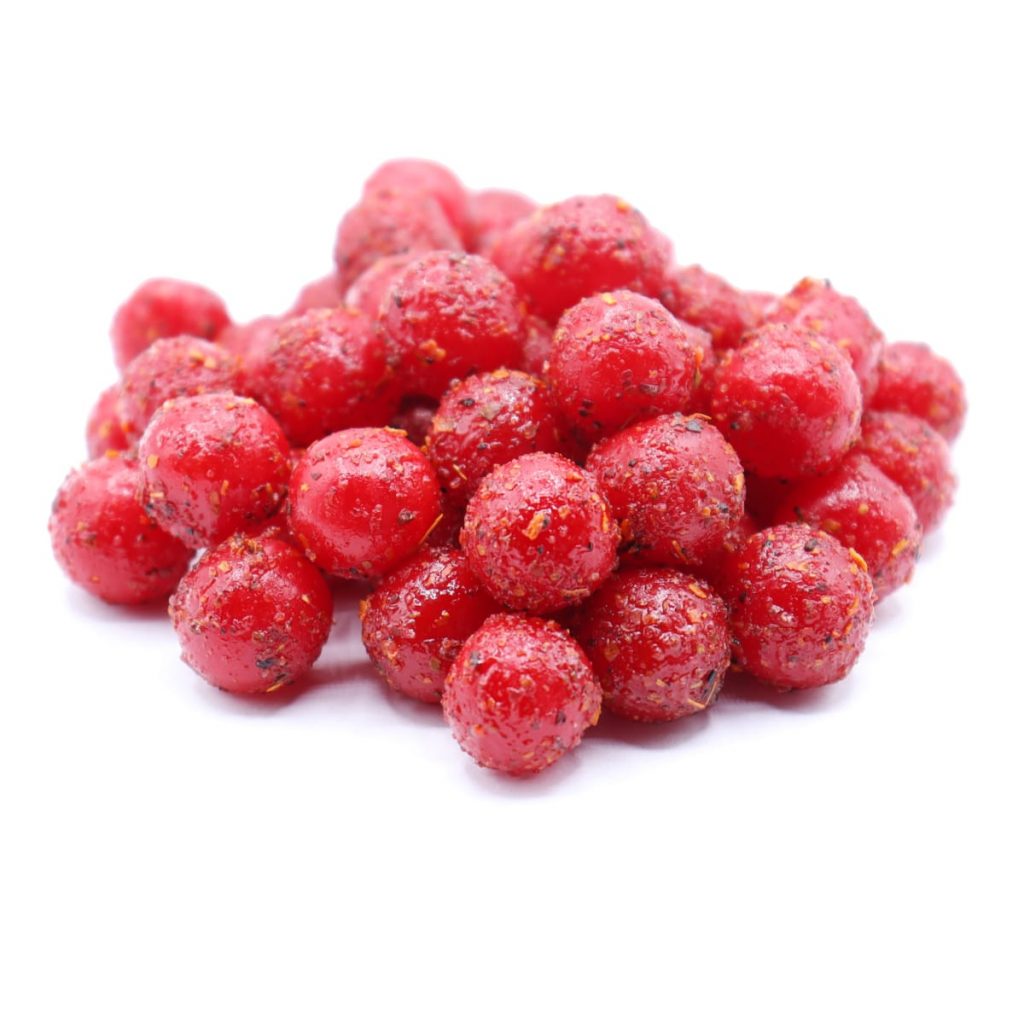
What to eat Chamoy with?
Traditionally, fruit and candy are Chamoys best friends. The most recurrent options are mangoes, apples, pineapple, cucumber, watermelon, and especially jicama. There’s a Mexican snack called ‘chamoyada’ which is, literally, jicama completely covered with Chamoy.
Other than that, it is also commonly eaten with sweet drinks and cocktails, or even with dishes.
Chamoy vs Chamoy Candy
Now that you’re aware of what Chamoy is, you might be
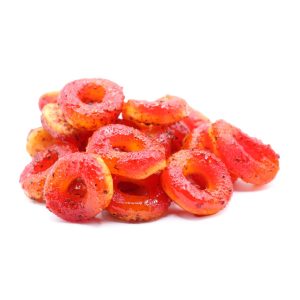
confused about the difference between Chamoy and Chamoy candy. Chamoy is, as mentioned before, a condiment. On the other hand, Chamoy candy is a candy that is covered, mixed, or both with chamoy.
A perfect example of Chamoy candy is Chamoy Nerd Clusters. These are the traditional nerd clusters but with a special touch. The chef’s secret ingredient for this absolute delight is… you guessed it, Chamoy.
Is Tajin the same as Chamoy?
Tajin is, to an extent, a type of chamoy. While Tajin contains
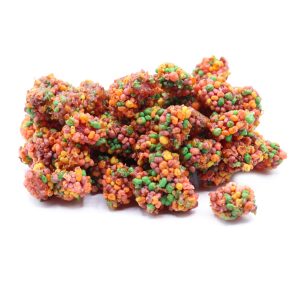
some of the core ingredients of chamoy like lime, chili peppers, and salt. This means that Tajin is more often used as a seasoning.
Nonetheless, it combines perfectly with liquid chamoy, so don’t hesitate to enhance any food with these 2 amazing condiments.
For example, these Chamoy Peach Rings combine the best of both worlds in a fruity candy that is incredibly tasty. This mouth-watering Chamoy Mexican candy is an excellent display of Chamoy’s finest.
Conclusion
Chamoy is adaptable, unusual, and scrumptious. The biggest downside of Chamoy is that it is highly addictive. So, if you haven’t yet, go and try it in any form you want.
Enjoy your ‘dulces enchilados’ and don’t forget to try new things!
What does Chamoy taste like?
Given that there are many versions of this ‘chilito’, the specific savor is downright impossible to describe. Tangy, salty, spicy, sweet: Chamoy is unique because it is a mix of all kinds of flavors that tastes like a bite of delightful madness. But don’t take anyone’s word for it.
Chamoy has a spicy flavor. The dominant flavor, however, is sweet and sugary. If you can imagine having a bite of a fruit and a bite of chili, then you might have a good idea of what it tastes like.
Sam Henselijn Author’s Biography – Meet L’Orenta Nuts CEO
Copyright 2024 L’Orenta Nuts
L’Orenta Nuts proudly holds the SQF food safety certification, symbolizing our unwavering dedication to upholding the highest standards of food safety and quality. This certification guarantees that our products undergo rigorous scrutiny, ensuring transparency, traceability, and adherence to global food safety regulations for the utmost consumer confidence.
L’Orenta Nuts has the HACCP (Hazard Analysis and Critical Control Points) certification is a systematic approach to identifying, evaluating, and controlling food safety hazards. It ensures that food products are produced and handled in a manner that minimizes risks and complies with safety standards.
Our GMP (Good Manufacturing Practices) certification ensures that a manufacturing facility adheres to comprehensive quality and safety standards while producing pharmaceuticals, food, and other consumer goods, promoting consistency, quality, and compliance with regulatory requirements.
L’Orenta is an FDA-approved manufacturing facility and has met the rigorous standards set by the U.S. Food and Drug Administration. It demonstrates compliance with regulations, ensuring the production of safe and high-quality food products.



